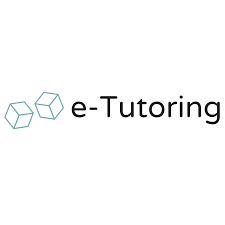In recent years, the education sector has undergone a massive transformation due to advancements in technology. One of the most significant developments is the rise of e-tutoring (electronic tutoring), which has revolutionized the way students learn and educators teach. E tutoring leverages digital platforms to provide personalized, flexible, and accessible learning experiences to students worldwide.
As traditional classroom settings face challenges such as limited resources, geographical barriers, and rigid schedules, e-tutoring emerges as a powerful alternative. This article explores the concept of e-tutoring, its benefits, challenges, and future prospects in shaping modern education.
What is E-Tutoring?
E-tutoring refers to the process of teaching and learning through digital platforms, where tutors and students interact in real-time or asynchronously using the internet. Unlike conventional tutoring, e-tutoring eliminates physical constraints, allowing learners to access expert guidance from anywhere in the world.
Key Features of E-Tutoring:
-
Online Interaction: Conducted via video calls, chat, or email.
-
Flexible Scheduling: Students can learn at their own pace.
-
Access to Global Tutors: No geographical limitations.
-
Interactive Tools: Digital whiteboards, quizzes, and multimedia resources enhance learning.
-
Recorded Sessions: Students can revisit lessons anytime.
Popular e-tutoring platforms include Khan Academy, Chegg Tutors, Wyzant, and VIPKid, offering subjects ranging from math and science to language learning and test preparation.
Benefits of E-Tutoring
1. Accessibility and Convenience
E-tutoring breaks down geographical barriers, allowing students in remote areas to access high-quality education. Learners no longer need to travel to tutoring centers; instead, they can connect with tutors from the comfort of their homes.
2. Personalized Learning
Unlike traditional classrooms with fixed curricula, e-tutoring offers customized lesson plans tailored to a student’s learning style, pace, and needs. AI-driven platforms can analyze performance and suggest targeted improvements.
3. Cost-Effective
E-tutoring is often more affordable than in-person tutoring since it eliminates transportation and infrastructure costs. Many platforms offer free resources, while premium services are competitively priced.
4. Flexible Scheduling
Students can book sessions at their convenience, making it easier to balance academics with extracurricular activities or part-time jobs.
5. Enhanced Engagement Through Technology
Interactive tools such as gamification, virtual labs, and AI-powered feedback make learning more engaging. Visual and auditory aids help in better retention of concepts.
6. Access to Expert Tutors Worldwide
Students can learn from top educators globally, gaining exposure to diverse teaching methodologies and expertise that may not be available locally.
7. Improved Performance and Confidence
One-on-one attention helps students overcome weaknesses, leading to better grades and increased self-confidence in their academic abilities.
Challenges of E-Tutoring
Despite its advantages, e-tutoring faces several challenges:
1. Internet Connectivity Issues
Not all students have reliable internet access, particularly in rural or underdeveloped regions, limiting the reach of e-tutoring.
2. Lack of Face-to-Face Interaction
Some students thrive in physical learning environments and may struggle with the absence of in-person engagement.
3. Self-Discipline Requirements
Online learning demands self-motivation and time management skills, which some students may lack.
4. Quality Control
With numerous e-tutoring platforms available, ensuring the credibility and expertise of tutors can be challenging.
5. Technical Difficulties
Software glitches, audio/video problems, and cybersecurity concerns can disrupt learning sessions.
The Future of E-Tutoring
The e-tutoring industry is expected to grow exponentially, driven by technological advancements such as:
1. Artificial Intelligence (AI) and Machine Learning
AI-powered tutors can provide instant feedback, adaptive learning paths, and predictive analytics to identify student weaknesses.
2. Virtual and Augmented Reality (VR/AR)
Immersive technologies will enable 3D learning experiences, such as virtual science labs or historical simulations.
3. Blockchain for Certification
Secure digital credentials will verify tutor qualifications and student achievements, reducing fraud.
4. Global Collaboration
E-tutoring will facilitate cross-border education, allowing students from different countries to learn together in virtual classrooms.
5. Hybrid Learning Models
A blend of online and offline tutoring will emerge, offering the best of both worlds.
Conclusion
E-tutoring is transforming education by making learning more accessible, personalized, and efficient. While challenges like internet accessibility and student engagement persist, technological advancements continue to bridge these gaps. As the demand for flexible and high-quality education grows, e-tutoring will play an increasingly vital role in shaping the future of learning.
Whether for K-12 students, college-goers, or professionals seeking skill development, e-tutoring offers a dynamic and scalable solution to meet diverse educational needs. Embracing this digital shift will empower learners worldwide, ensuring that knowledge is no longer confined by physical boundaries.
Final Thoughts
Are you considering e tutoring for yourself or your child? The benefits far outweigh the limitations, and with the right platform, students can achieve academic excellence in an engaging and flexible environment. The future of education is digital—are you ready to be a part of it?








